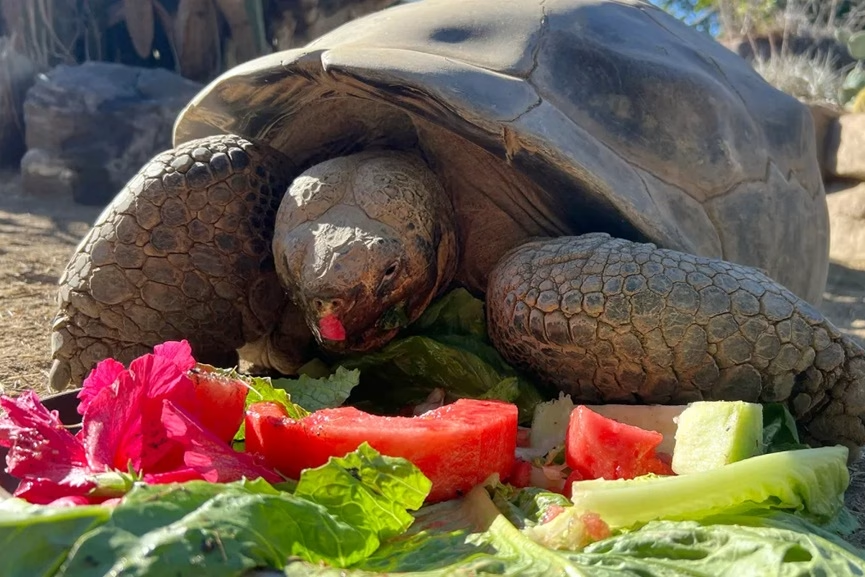San Diego: The San Diego Zoo has said goodbye to one of its most cherished animals. Gramma, a Galapagos tortoise believed to be around 141 years old, died on 20 November after a long life that spanned eras, continents, and generations of visitors.
Born in the Galapagos Islands in the late 1800s, Gramma arrived in San Diego nearly a century ago. Records suggest she was transferred from the Bronx Zoo in either 1928 or 1931, making her one of the zoo’s earliest Galapagos tortoise residents. Over the decades, she became a gentle icon known for her calm nature and fondness for romaine lettuce and cactus fruit.
Gramma lived through two world wars, the rise and fall of empires, and the terms of 20 US presidents. Yet her quiet presence remained a constant comfort for those who visited her. Keepers lovingly called her the Queen of the Zoo, a title she earned through both age and character.
In recent months, age-related bone conditions had begun to take a toll, and the zoo made the decision to humanely euthanize her. The announcement prompted an outpouring of memories from visitors who had met her across multiple generations. Many described childhood visits with their parents, later returning with children of their own.
For Cristina Park, now 69, Gramma sparked a lifelong affection for tortoises. She recalled riding on the back of a tortoise during a visit to the zoo in the 1950s, an experience no longer permitted but one she says shaped her view of the natural world. She went on to raise a desert tortoise and became a supporter of conservation efforts. To her, the longevity of Galapagos tortoises is a reminder of nature’s resilience.
Galapagos tortoises are among the longest-living animals on Earth. In the wild, they can exceed 100 years, and in captivity they may live close to twice that. The oldest known was Harriet, a tortoise believed to have lived to 175 at the Australia Zoo before her death in 2006.
Despite their legendary lifespan, the species has faced severe threats. Of the 15 known subspecies, three are now extinct, and the rest are listed as vulnerable or critically endangered. Conservationists have worked for decades to rebuild populations, releasing more than 10,000 young tortoises into the wild since 1965. Some subspecies have come back from the brink due to these efforts.
This year brought unexpected hope for the species. In April, the Philadelphia Zoo celebrated the hatching of four Galapagos tortoise babies to first-time parents who were themselves around 100 years old. In June, Miami’s resident tortoise Goliath became a father for the first time at age 135.























